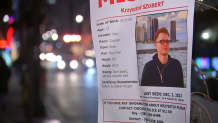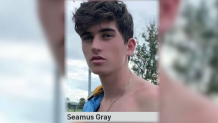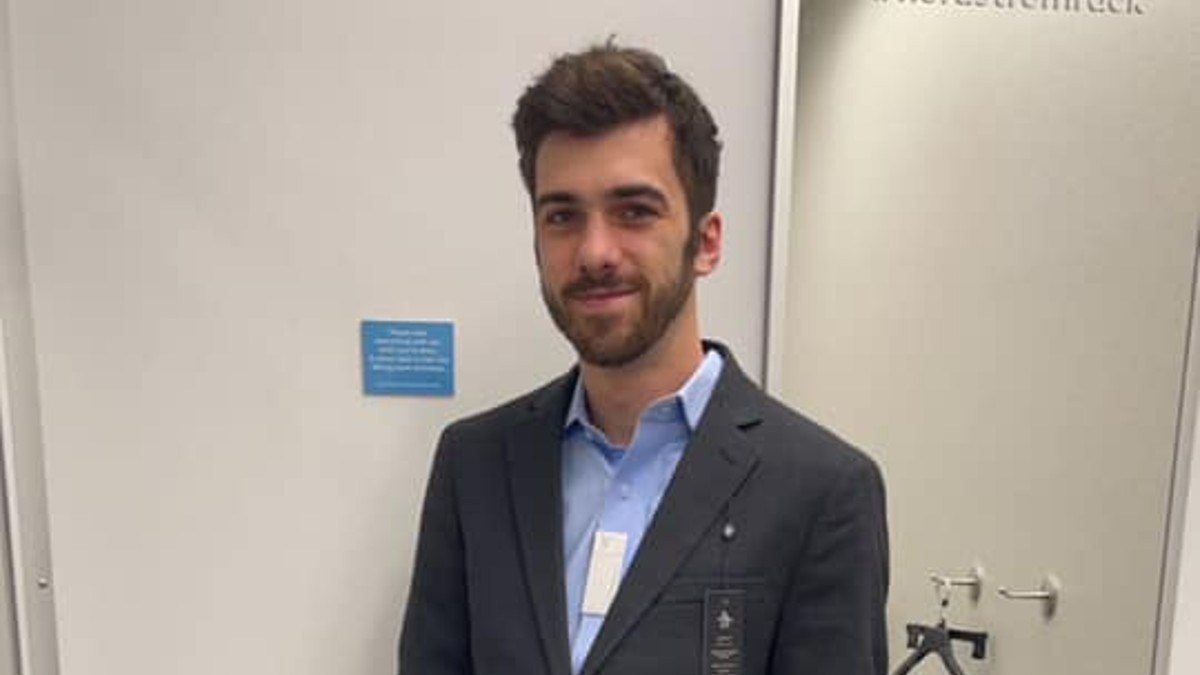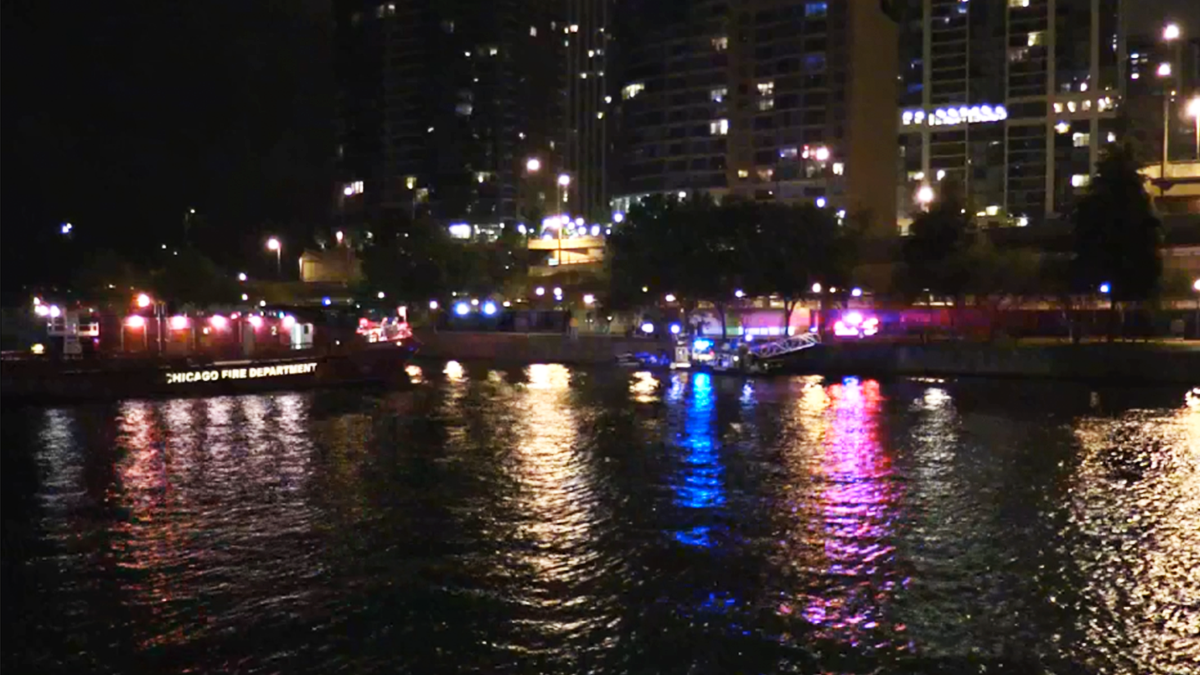For those following Chicago-area deaths closely, it has seemed suspicious that one after another people appear to be drowning at an alarmingly high rate. But could they actually be connected?
Questions surrounding a seeming uptick in water-related deaths, many of them young men, in the Chicago area have fueled another round of speculation about whether the deaths are not only connected but if they are the work of a serial killer.
Theories surrounding the involvement of the so-called "Smiley Face Killer" continue to consume social media channels following each report of a person found dead in a body of water, with TikTok channels and Reddit sleuths calling for more answers as Chicago police insist the deaths are not connected.
Fueling that speculation originally were reports of unsolicited taxi offers or "free rides" for patrons leaving bars and restaurants in Chicago, where drivers have offered rides outside of ride-share apps or formal taxi businesses for a cheaper cost – something consumer advocates and those in public safety strongly recommend against doing.
Authorities, however, have said unsolicited rides and the drownings are unrelated.
One of the most recent incidents involved the death of 26-year-old Noah Enos, who disappeared in early June following a concert at the popular Salt Shed music venue. His body was found less than a week later in the Chicago River.
NBC Chicago has closely investigated cases stoking the serial-killer theory -- from deaths in December, through this year and as recently as Enos' disappearance -- and uncovered some not-yet-reported updates.
Scroll down to read more about these cases, what police told NBC Chicago, data comparing drowning deaths this year to previous years and what we found about unsolicited taxi offers in Chicago.
How many drownings have there been?
Since December, there have been more than half a dozen reported drownings where young men were reported missing days before their bodies were tragically discovered. A number of earlier cases have also been flagged in social media reports, some dating back to early 2022.
Feeling out of the loop? We'll catch you up on the Chicago news you need to know. Sign up for the weekly Chicago Catch-Up newsletter.
Who are the deceased?
Krzysztof Szubert
Krzysztof Szubert, a 21-year-old Polish businessman, was reported missing on Dec. 3 after leaving a River North party. The Cook County Medical Examiner’s office said Szubert’s body was recovered from Lake Michigan in the area of Oak Street Beach, on Dec. 7.

The medical examiner determined Szubert’s cause of death was “drowning with ethanol intoxication as a contributing factor,” and the manner of death was ruled “accidental.”
Peter Salvino
Peter Salvino, a 25-year-old Northwestern doctoral student, disappeared on Dec. 17 after leaving a party in Lincoln Park. Officials say Salvino’s body was recovered from Diversey Harbor, off of the 2400 block of North Cannon Drive on Dec. 20, three days after he was reported missing.

Salvino’s cause of death mirrors Szubert’s: The medical examiner determined Salvino had “drown[ed] with ethanol intoxication as a contributing factor,” and the manner was also ruled “accidental.”
Anthony Rucker
Anthony Rucker, 23, was reported missing on Feb. 13, and Chicago police recovered his body three days later on Feb. 16 in the Chicago River, near the 3700 block of South Pulaski Road.
The medical examiner’s office determined Rucker had taken his own life, and the primary cause of death was ruled as a "drowning."
If you or someone you know is having suicidal thoughts, help is available by calling 9-8-8 or by visiting NAMI Chicago here.
Joel Orduno
Joel Orduno, 24, was last seen at his Logan Square residence on Feb. 17 before his disappearance was reported to Chicago police.

Nearly a full month later, officers said Orduno’s body was discovered in the Chicago River, in the area of the 2700 block of North Leavitt.
Chicago police say a death investigation in the case has been closed and the death has been classified as "non-criminal."
On June 21, the Cook County Medical Examiner's office closed Orduno's case, officially ruling the cause of death as a "drowning" and the manner of death as "undetermined."
Séamus Gray

Twenty-one-year-old U.S. Navy servicemember Séamus Gray first disappeared after he was seen leaving a Waukegan bar on March 18.
According to authorities, Gray was last seen around 1:35 a.m. on March 18 leaving Ibiza Nightclub, located at 17 N. Genesee St. in Waukegan, about 40 miles north of Chicago. Gray's disappearance was first noted when he didn't report back to the Naval Station Great Lakes base at his scheduled 2 a.m. time, officials said.
Security footage from outside Ibiza Nightclub shows Gray just before 2 a.m. standing and talking to a group of people. At one point in the video, Gray is seen on the ground. At another point, someone in the group appears to grab the wallet from Gray's pocket, but then throws it back at him.
Later in the video, Gray is seen taking off down a nearby alley.
In a press conference, Ibiza manager Adrian Hernandez said Gray entered the nightclub twice early Saturday morning, but was ultimately escorted out for being too intoxicated.
His mysterious disappearance led to large search efforts from multiple departments as authorities struggled to find answers in the case.
Gray's body was found on April 19 when a group of ComEd workers doing routine work near the harbor said they saw a body in the Lake Michigan water.
According to a spokesperson for the Lake County Coroner's office, no significant injuries were found on Gray's body and toxicology testing discovered a blood alcohol concentration of 0.14, well over the legal driving limit but below what medical professionals consider to be a "life-threatening" amount.
A preliminary autopsy determined Gray's cause of death to be drowning.
"Based on the overall police, NCIS and Coroner’s investigation the manner of death is 'Undetermined,'" Steve Newton, chief deputy with the Lake County Coroner's office.
Noah Enos
On June 12, Noah Enos went to a King Gizzard and The Lizard Wizard concert at Chicago's Salt Shed with a coworker.
His girlfriend, Nicole Wijs, told NBC Chicago that Enos texted her and sent her messages on Snapchat throughout the night, including a picture inside the venue. She said her last message from Noah was around 9 p.m. that evening. His phone died about an hour later.
“They did review some of the footage, and they saw him and his coworker walking around the venue at about 9:30 p.m. They said the show ended at 10 p.m. so there’s a 30-minute gap that they’re looking into to see maybe where he would have gone into the venue," Wijs said.

Wijs said Enos' co-worker told her the two got separated as the show was ending.
On June 17, his body was found in the Chicago River.
The Cook County Medical Examiner's Office said his body was pulled from the river near the 1300 block of North Elston Avenue.
Officials said "detectives are conducting a death investigation, pending autopsy results."
Other cases
In addition to the above deaths, a body was found in the Chicago River at a city forest preserve on April 11 as authorities were investigating a missing person case, police said.
The Forest Preserves of Cook County Police said it was assisting the Chicago Police Department in a missing person investigation, adding officers and dogs to search along the North Branch Trail at Caldwell Woods, at 6767 N. Milwaukee Ave., that afternoon.
The search continued into the evening before authorities said a body was found in the water of the North Branch of the Chicago River. The case was handed over to Illinois State Police for a death investigation.
Two days later, a man's body was pulled from the Chicago River, sparking another death investigation from authorities.
The body was discovered around 10:30 a.m. on April 13 in the 300 block of North Columbus Drive.
Details surrounding the circumstances remain unclear and the identity of the body has not been released.
Police said the man was pronounced dead at the scene and detectives are conducting a death investigation, pending an autopsy.
In March, the body of a Genoa man who had been missing for a week was pulled from a river.
Genoa Police Chief Robert Smith said the body of Daniel Elkinton was found in a river on March 4.
Elkinton was last seen Friday, Feb. 24, buying spirits after work. His family previously told NBC Chicago Elkinton apparently made a drink at his home, then later that night told a co-worker that he left his wallet inside his work truck. He then disappeared.
The DeKalb County Coroner’s office told NBC 5 that Elkinton, 41, died after an accidental drowning, with psilocin and alcohol intoxication as contributing factors.
Psilocin is a hallucinogen found in psilocybin mushrooms, but the coroner’s office said it “did not determine the presence of drugs,” only that the chemical was present in a toxicology report, which was passed onto the pathologist who referred to the report in determining the manner and cause of death.
What did NBC Chicago uncover?
New information was found after reviewing the Cook County Medical Examiner’s office records on the cases involving Szubert and Salvino.
In both cases, police reviewed surveillance footage of the men walking alone into Lake Michigan after a night of drinking. NBC Chicago has not independently viewed this footage.
In Szubert’s investigation, video footage from Lake Shore Drive and Oak Street Beach was reviewed and officers said they witnessed Szubert on video falling into Lake Michigan. His body was discovered on an adjacent beach, partially submerged in water.
In Salvino’s case, detectives tracked his movements through several Chicago POD cameras. The footage revealed he left a party at the Geneva Terrace Apartments. He lived northwest but was seen walking southbound, then eastbound.
“Surveillance showed Salvino walk through the harbor parking lot and into the lake," the report stated.
Salvino tried to swim out, but per detectives, it is believed that Salvino may have been too intoxicated to save himself.
After watching the surveillance footage, a Chicago police detective went out to the same area where Salvino was seen in the footage entering the lake, and that’s when they discovered his body in the water.
Is this number of drownings unusual?
According to data provided by Cook County Medical Examiner's office, the number of drownings has not risen from previous years.
In fact, the numbers showed drowning deaths in the city have recently declined.
In 2018, 54 drowning deaths were reported, not including those in swimming pools or bathtubs.
In 2019, that number was 56, though two were considered homicides.
In 2020, the number dropped to 44, followed by 46 in 2021 and 41 in 2022.
So far in 2023, there have been nine, including three with "undetermined" causes.
UPDATE JUNE 29: This article has been updated to reflect the total number of drownings investigated by the Cook County Medical Examiner’s office for the years of 2019, 2020, and 2023. The total number of drownings in 2019 has been updated from 57 to 56 drownings, and in 2020, 43 drownings has been updated to 44. These changes are due to a classification discrepancy with the public-facing Cook County Medical Examiner’s Case Archive dataset. The total number of drownings for 2023 has been updated from 7 drownings to 9 drownings, as two additional cases had not been added to the public facing data at the time of this article’s initial publication, but were under investigation by the Medical Examiner’s office.
What are authorities saying?
While there are some loose similarities to the cases, both the medical examiner’s office and Chicago Police Department previously told NBC 5 there are no known connections.
“At this time, there is no evidence suggesting there is a connection between these drowning deaths,” a spokesperson for the Chicago Police Department told NBC 5 in March. “The Chicago Police Department conducts thorough death investigations as we work to bring a measure of closure to the families of these, and all, victims.”
Data from the Cook County Medical Examiner’s office shows a majority of drowning investigations are ruled “accidental," with 61% labeled as such since 2018.
Nearly one in three drownings since 2018 were ruled as “undetermined,” or examiners did not have enough evidence to conclude the manner of death.
What about unsolicited taxi offers?
Some social media posts have drawn a connection between the drownings and reports of drivers across Chicago approaching patrons of bars or restaurants leaving for the night, offering rides home for cash or free, outside of formal ride-share apps or taxi operations.
“I’m in Chicago,” one social media user said earlier this month. “[This] happened to me four times in the last two months.”
The Chicago Department of Business Affairs and Consumer Protection (BACP) told NBC 5 it has received 12 complaints of “fake taxis” from Jan. 1, 2022, to March 27, 2023. These complaints were related to overcharging and taxi numbers not matching the top-light and vehicle.
The problem of unsolicited rides is not new, and public safety advocates say people should never accept these offers or rides.
When using ride-share apps, like Uber or Lyft, advocates recommend customers confirm that the vehicle that pulls up is the ride that was assigned to them via the app, including confirming the vehicle’s make, model and license plate number.
If a person is approached by a suspicious vehicle, police recommend calling 911 and making note of the vehicle’s details, if it is safe to do so.
The Department of BACP also recommends reporting these types of complaints to the CHI 311 system, via calling 311 or online at 311.chicago.gov.
For more information on finding a safe ride home, visit Chicago’s Ride Smart website here.
What is the 'smiley face killer' theory?
The "smiley face killer" theory was started more than a decade ago by two New York detectives, Kevin Gannon and Anthony Duarte, as well as Dr. Lee Gilbertson, a criminal justice professor at Saint Cloud State University.
The trio have long alleged that a number of drownings of young men across the U.S. are related to a serial killer or a group of serial killers, who typically leave marks of a smiley face or another gang symbol near the sites of their murders. The killings, they say, trace back to at least the late 1990s.
In each case, the drownings have been ruled accidental or undetermined.
In the recent Chicago drowning cases, investigators have not noted any marks or smiley face drawings on or near the victims.
The theory surged back into headlines when it became the center of an Oxygen docuseries called "The Smiley Face Killer: The Hunt for Justice."



